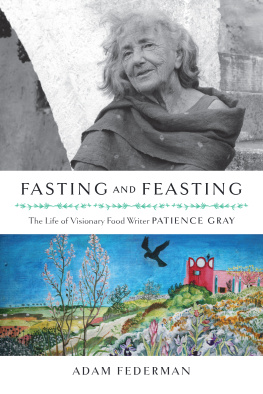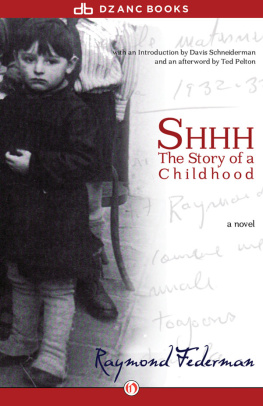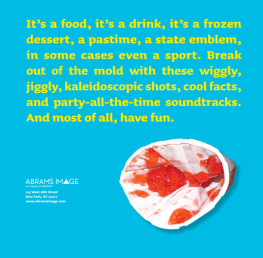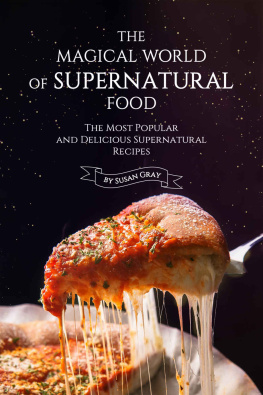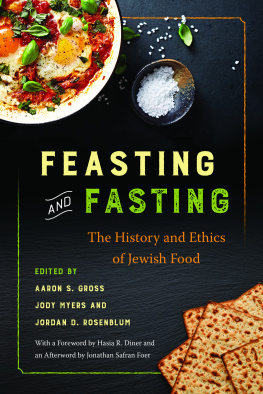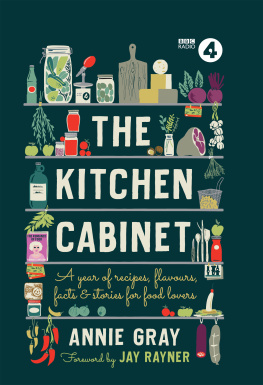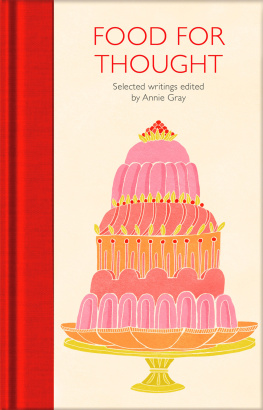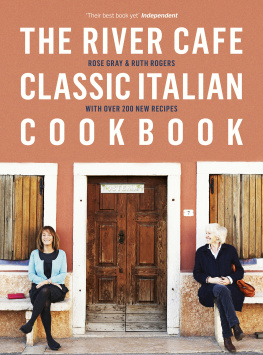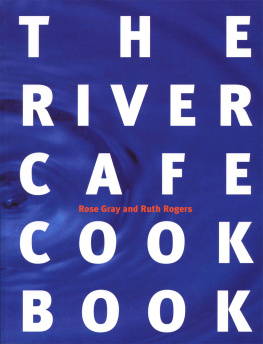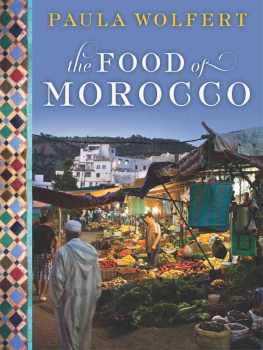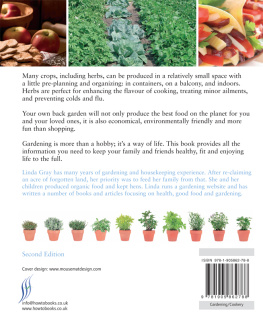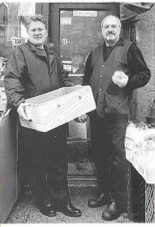PRAISE FOR FASTING AND FEASTING
Honey from a Weed has been a constant companion for many years. It is a brilliant work, ahead of its time in so many ways. To now read the story of this fine books author and her remarkable life is a great joy.
Jeremy Lee, chef patron, Quo Vadis
Patience Gray was a cultural outrider. Her life encompassed many thoughts and actions that preoccupy us today: single motherhood, passion gratified, an appreciation of the wider European scene, simplicity and self-sufficiency, food and cookery as an expression of place and identity, existence infused by art and taste. Yet she never quite banished the bourgeois within her. These contradictions, and her distinctive and distinguished contributions to the modern scene, are gracefully described in this sensitive and revealing biography.
Tom Jaine, editor, Petits Propos Culinaires
A revelatory book about an extraordinary woman, writer, and cook. Patience Grays rackety life seems to conform perfectly with her visionary and revolutionary views about food, cooking, and eating. She should become a totemic culinary figure for our times.
William Boyd, author of Sweet Caress and Any Human Heart
Patience Grays Honey from a Weed is an anomaly in the world of cookbooksan inimitable, passionate, and reader-challenging account of her off-the-grid life in poverty-stricken rural areas of Catalonia, Tuscany, the Cyclades, and, most importantly, Apulia.
Part acerbic diarist, part gifted ethnobotanist, part fervent environmentalist, part food writer whose recipes still spoke their rustic dialect, Patience Gray wove her life, thoughts, and experiences into an indisputable masterpiece. Now, in Adam Federman, she has found her biographerastute, empathetic, indefatigable in pursuit of the painterly details that he then deftly works into a portrait of an amazing originaland the remarkable company she kept.
John Thorne, author of Outlaw Cook and Serious Pig
Fans of Honey from a We ed are sure to devour this highly readable biography of Patience Gray, which reveals not only the inspirations and experiences behind that cult book but also the life and times of the fiercely independent woman who wrote it. Adam Federmans carefully researched book lucidly describes the intellectual and emotional development of a woman who made her own rules both in work and love.
Jojo Tulloh, author of East End Paradise and The Modern Peasant
I felt I almost met Patience Gray amongst the pages of Honey from a Weed and was consumed by a desire to gain her acquaintance. I never did but somehow fancy I came to know her in Fasting and Feasting and love her all the better for it.
Jacob Kenedy, chef-owner, Bocca di Lupo
Copyright 2017 by Adam Federman.
All rights reserved.
No part of this book may be transmitted or reproduced in any form by any means without permission in writing from the publisher.
Project Manager: Alexander Bullett
Project Editor: Benjamin Watson
Copy Editor: Angela Boyle
Proofreader: Rachel Shields
Indexer: Shana Milkie
Designer: Melissa Jacobson
Printed in the United Kingdom.
First printing May 2017.
10 9 8 7 6 5 4 3 2 117 18 19 20 21
Chelsea Green Publishing
85 North Main Street, Suite 120
White River Junction, VT 05001
(802) 295-6300
www.chelseagreen.com
For my parents
CONTENTS
Introduction
Patience Grays Honey from a Weed is one of the most important and best-loved cookbooks of the twentieth century, yet its author remains little known beyond a small circle of food writers and critics. Such is the fate, perhaps, of a woman who lived for more than thirty years in a remote corner of southern Italywithout electricity, modern plumbing, or telephoneand liked to say, deliberately misquoting Gertrude Stein, that she wrote only for herself and friends. As her publisher Alan Davidson once observed, She simply wished her accumulated knowledge to be preserved in a permanent, beautiful form for the benefit of her grandchildren.
Alan rescued the typescript from oblivion, and when Honey from a Weed was published in 1986, it was immediately hailed as a classic. Gourmet described it as magically idiosyncratic and placed Patience alongside Patrick Leigh Fermor, Freya Stark, and Elizabeth David. In an early review of Honey from a Weed , John Thorne wrote that only D. H. Lawrence was her equal in conveying the rich physical sensuality of Mediterranean life. In other words, she was much more than just a food writer. Honey from a Weed part recipe book, part travelogue, and part memoiroffered a singularly evocative portrait of a remote and fast-disappearing way of life. Following the publication of Honey from a Weed , food writers sought Patience out and many made the pilgrimage to Puglia to see her, a testament to the power of her work. She was profiled by Paul Levy, appeared on the BBCs Food Programme with Derek Cooper, and was featured along with her partner, the Belgian sculptor Norman Mommens, in the Italian magazine Casa Vogue .
Although she enjoyed the attention, Patience was rather guarded about her own life. This applied not only to visiting journalists and food writers but to friends and family as well. There was an aura of secrecy about her, a sense that her past was somehow shuttered, which Patience did little to dispel. This aura of secrecy was enhanced by her interest in astrology and mysticism and her vast folkloric knowledge of edible plants and mushrooms. She shared her workspace in Pugliato which others were rarely admittedwith a large black snake and often ruminated on the symbolic meaning of the scorpion, which happened to be Patiences astrological sign. She was born on Halloween. It is perhaps not surprising then that several people, including Paul Levy in his profile for the Observer and the Wall Street Journal , described Patience as a modern-day witch.
Yet in the few interviews she gave, she proffered tantalizing clues to her earlier life: a great-grandfather who was a Polish rabbi; surviving the war years in a primitive cottage in rural Sussex, where she first learned to forage; raising two children out of wedlock in postwar London. Before she embarked on her Mediterranean odyssey in 1962, Patience worked closely with some of the leading designers and landscape architects of her day. She edited a book on indoor plants and gardens in 1952, was assistant to the head of the school of graphic design at the Royal College of Art until 1955, and in the late 1950s and early 1960s, designed textiles for Edinburgh Weavers and wallpapers for Wallpaper Manufacturers Limited. She was also the first editor of the womans page at the Observer from 1958 to 1962, and her weekly column reflected her background in art and design.
Of course I knew none of this when I happened upon Patiences obituary in the quarterly food journal The Art of Eating in 2005. In the reminiscence, the magazines editor, Ed Behr, who visited Patience on two occasions at her farmhouse in Puglia, called Honey from a Weed one of the best books that will ever be written about food. It was unusually high praise from a discerning and often unsparing critic. Soon after, I discovered a copy of Honey from a Weed on a shelf in my parents kitchen. A single recipe was marked: Catalan veal stew with prunes and potatoes, described in a note scribbled in the margin as fabulous, rich, full, and simple to make. I read the book from cover to cover and was swept away by its originality, its sense of urgencythe introduction is a powerful argument in favor of eating seasonallyand its vivid descriptions of fasting and feasting. It was unlike anything Id ever read before. Yet despite the books intensely personal nature, it revealed little of its authors past, with the exception of a fleeting and somewhat cryptic reference to gathering fungi in a wood in Sussex during wartime. Naturally I wanted to know more.

